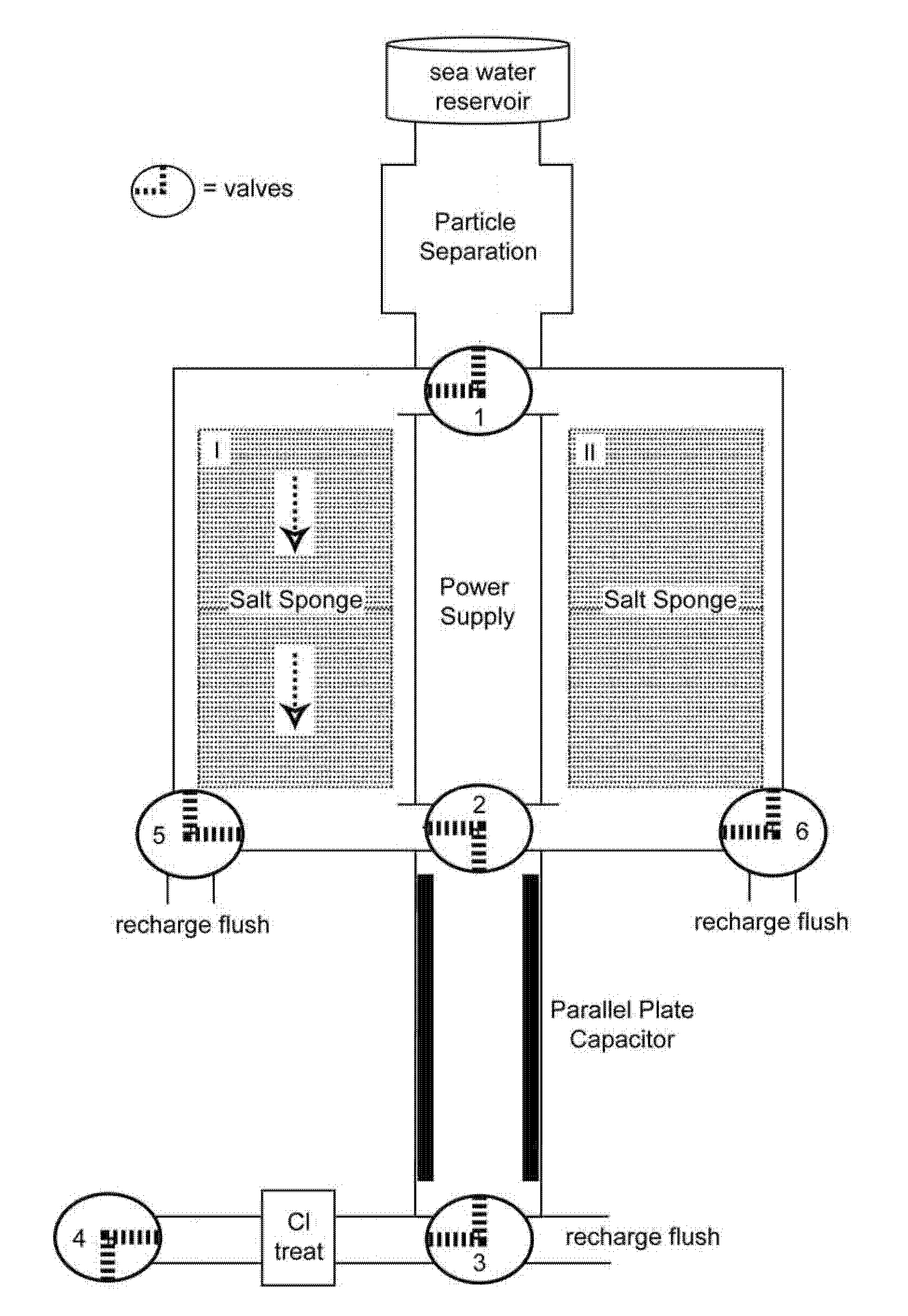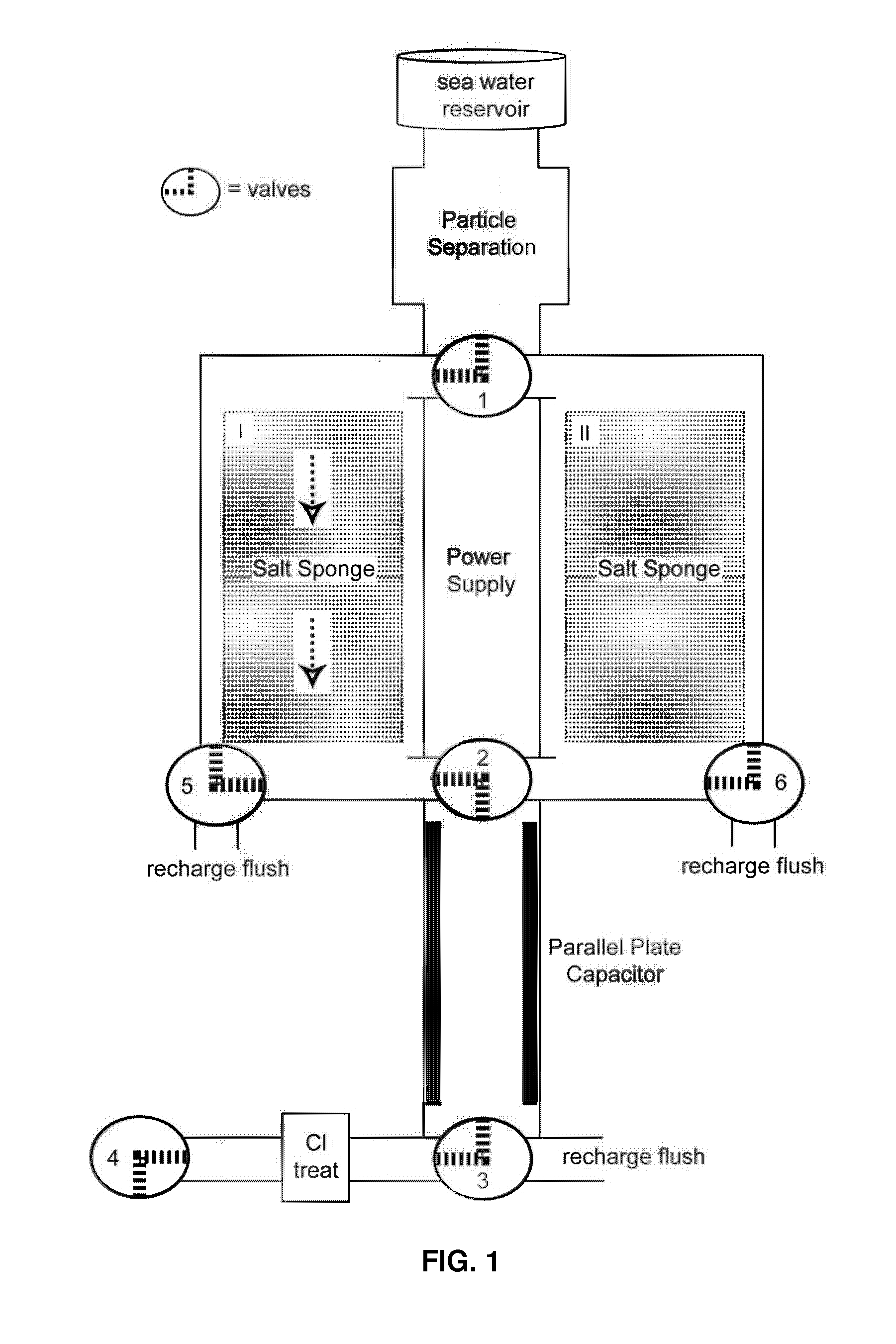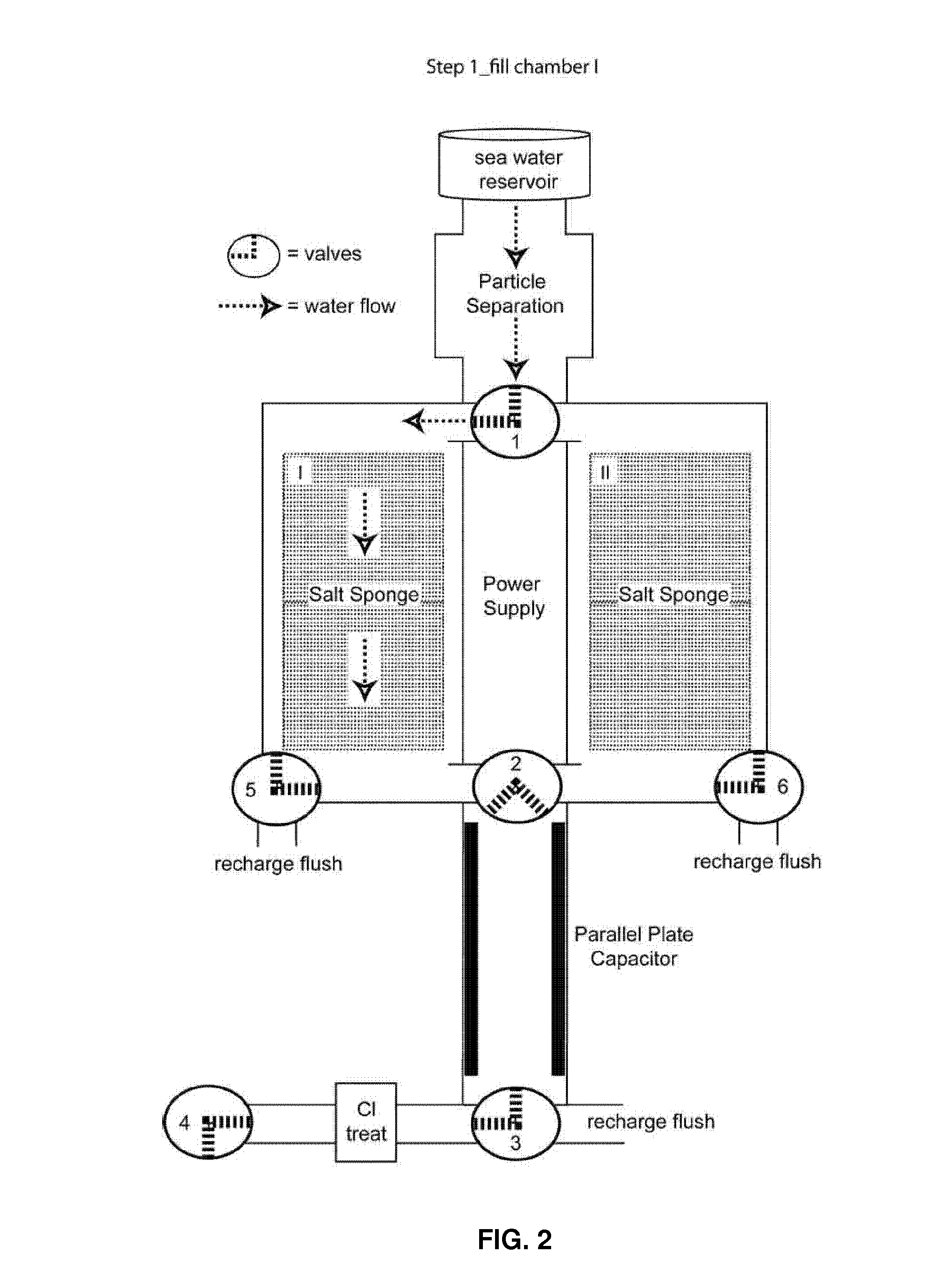Water desalination apparatus and method
a technology of desalination apparatus and water desalination water, which is applied in the direction of electrostatic separation, machines/engines, water/sewage treatment by ion exchange, etc., can solve the problems of high energy consumption, inefficient systems, and large maintenance costs, and achieves high surface area
- Summary
- Abstract
- Description
- Claims
- Application Information
AI Technical Summary
Benefits of technology
Problems solved by technology
Method used
Image
Examples
example
[0048]Aza-15-crown-5 ether was attached to three different carbon substrates:
(i) Plain graphite plates, which allowed for straightforward and fast testing;
(ii) Graphite fibers mesh (530 Plain Weave Carbon Fiber Fabric, Fiberglast Co.), which offered the advantage of greater surface area than graphite plates; prior to chemical modification, the material was baked in air, for removing the epoxy sizing; and
(iii) Carbon aerofoam with very large surface area with very large surface area, without coating, ridged and open cell for rapid flow through; this material enables for confining to its surface a large number of crown ether groups that retain the alkali ions from seawater.
[0049]Modification of the graphite substrates included two main steps:
(i) tethering to the surface of a linker with an outermost functional group, and
(ii) connecting the aza-15-crown 5 ether to the linker.
[0050]First, graphite substrate samples (foam or plate) were tied with 6-8″ twisted strands of Teflon tape. This...
PUM
| Property | Measurement | Unit |
|---|---|---|
| pressure | aaaaa | aaaaa |
| bias voltage | aaaaa | aaaaa |
| bias voltage | aaaaa | aaaaa |
Abstract
Description
Claims
Application Information
 Login to View More
Login to View More - R&D
- Intellectual Property
- Life Sciences
- Materials
- Tech Scout
- Unparalleled Data Quality
- Higher Quality Content
- 60% Fewer Hallucinations
Browse by: Latest US Patents, China's latest patents, Technical Efficacy Thesaurus, Application Domain, Technology Topic, Popular Technical Reports.
© 2025 PatSnap. All rights reserved.Legal|Privacy policy|Modern Slavery Act Transparency Statement|Sitemap|About US| Contact US: help@patsnap.com



